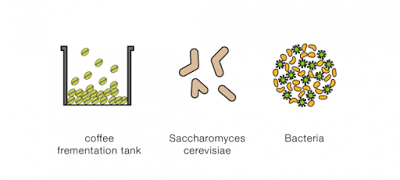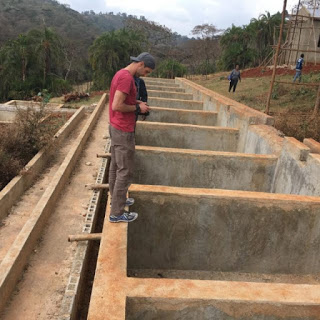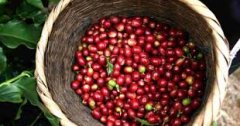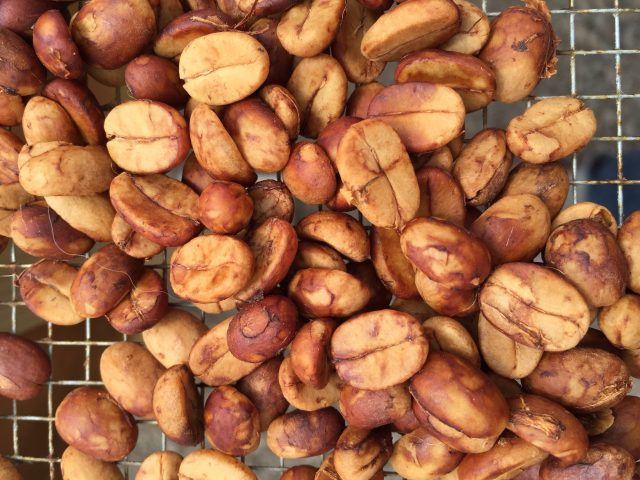Explanation on the fermentation mode of raw coffee beans: the difference between dry fermentation and wet fermentation and the scope of application
For professional baristas, please follow the coffee workshop (Wechat official account cafe_style)
Does the fermented taste of coffee beans indicate poor quality?
The fermentation of raw coffee beans can be divided into dry type and wet type.
Dry fermentation is subdivided into Brazilian style, Yemeni style and Sino-American style. (it's really complicated.)
In the case of Brazilian beans, there is a "dry fermentation" because of the local lack of water.
Is to remove the peel first, and then put part of the pericarp into the fermentation tank.
Use the enzymes in the pericarp to play a role
The advantage is that it will have the sweet aroma of syrup, while medium baking will have nutty and cocoa aromas.
The disadvantage is that if it is not handled properly, it may be accompanied by earthy and musty smell.
If there are too many defective beans that pollute the aroma, the quality of coffee will be affected naturally.
It will be beaten to the commercial bean.
But for Yemeni mocha and kabou,
Dry fermentation produces a soft and palatable aroma like ripe dried fruit and wine.
This is because the humidity in Yemen is drier than in Brazil.
However, the dry fermentation technology of Central American countries such as Panama is more advanced than that of Brazil.
The fermentation process strictly monitors the enzyme concentration, the content of coffee pulp and the temperature in the fermentation tank, etc.
Reduce the bad flavor that may be produced in the fermentation process.
Yemeni Moka. Jpg
But some producing areas are inherently unsuitable for dry fermentation (for example, Colombia)
So wet fermentation is used in these areas.
However, some people always think that the taste of wet fermentation is not much different from that of washing treatment.
The flavor is a little too clean.
And wet fermentation has its drawbacks.
Food spoilage bacteria such as butyric acid bacteria may appear in the sink, resulting in sour taste.
If wet fermentation is handled well, it will show the aroma of coffee.
If it is not handled properly, it will be the bad taste of the fruit!
This phenomenon is quite common in wet fermentation or honey treatment.
The pros and cons are not a matter of handling methods, but quality control is the key.
That's why the cup test is important.
The quality control of coffee beans is from planting, harvesting, processing to export, transportation, baking and packaging.
The extreme requirements of each link can achieve "boutique coffee".

Dry fermentation and its flavor
"after we remove the pulp, we put the coffee with endocarp in the fermentation tank, and the fermentation promotes the sweetness, chocolate and fruit flavor of the coffee." but one of the challenges of fermentation is temperature control. Since temperature can affect the degree of fermentation, it will also negatively affect the stability and flavor of the process.
Effect of temperature on dry fermentation, source: Sasa Sestic
The diagram on the left side of the dotted line above shows that we ferment the coffee at an average temperature of 16 degrees for 24 hours. The coffee tastes great and the flavor is well balanced.
The right side of the image above represents fermentation at a temperature of 26 degrees for 24 hours, with marked pink blocks, which can occur when the fermentation is too long, and alcoholic acids dominate the fermentation, resulting in excessive acetic acid, dryness and metallic taste.

Wet fermentation and its flavor
You may have heard someone describe wet fermentation as double washing, double fermentation, Kenyan washing, etc., which is common in East African countries and is famous for its clean and clear flavor, but Sasa describes this treatment as adding flavor to the cup.
"when we remove the pulp and put the coffee with endocarp into the water, the water will help prolong the fermentation time, resulting in a softer mellow thickness, rich acidity and more elegant flavor characteristics of the coffee."
Fermentation tank built by the inspection program in Ethiopia, source: Project Origin
Of course, this does not mean that the treatment is not challenging. Sasa mentioned that temperature and water quality can also affect the results.
Sasa: "A few years ago, I did an experiment with Raul Riviera, the owner of Santa Rosa in El Salvador. We used Rain Water instead of spring water to ferment. Rain Water would absorb a lot of fruit flavor and sugar from the coffee fruit. As a result, the cup test score was reduced by five points. The coffee tasted insipid and had no distinct flavor. The effects of the water used for fermentation still need to be studied. "
Important Notice :
前街咖啡 FrontStreet Coffee has moved to new addredd:
FrontStreet Coffee Address: 315,Donghua East Road,GuangZhou
Tel:020 38364473
- Prev

Introduction to the difference of coffee flavor between Ethiopian hole washing method and sun treatment method
Country: Ethiopian Manor: Konga Cooperative producing area: Yejia Chevy Variety: Ethiopian Native species treatment method: washing Cup Test report: cup Test record: the Conga Cooperative (Konga Coop) is made up of 1556 family members of small coffee farmers, located 5 km south of Yirgacheffe. It was founded in 1994 and joined the YCFCU Cooperative Union in 2002.
- Next

How does the fermentation of raw beans affect the flavor of coffee?
Professional baristas Exchange follow Coffee Workshop (official Wechat account cafe_style) Sasa, winner of the 2015 World Barista Competition, uses an innovative fermentation process called washing carbon dioxide impregnation, two years later he has his own estate and is therefore more committed to fermentation technology. In fact, at the Budapest World Series in June 17, Sasa aimed at controlling fermentation
Related
- What is the meaning of lactic acid fermentation with coffee bean treatment?
- How to judge the state of foam by sound?
- How does the latte pull out the unicorn pattern? Come to get for a little trick to improve the flower pull!
- Will flower pulling affect the taste of the latte?
- Do you know the history of coffee?
- The difference between honey treatment and sun washing what is raisin honey treatment?
- What kind of milk can a novice use to make coffee foam to keep the foam longer? The correct method and skills of milking tutorial sharing
- Why do washed coffee beans taste sour? Flavor characteristics of washed Coffee
- Introduction to the skill of how to practice the size and height of water injection around the circle of hand-brewed coffee
- How do beginners practice coffee flower drawing from scratch?

